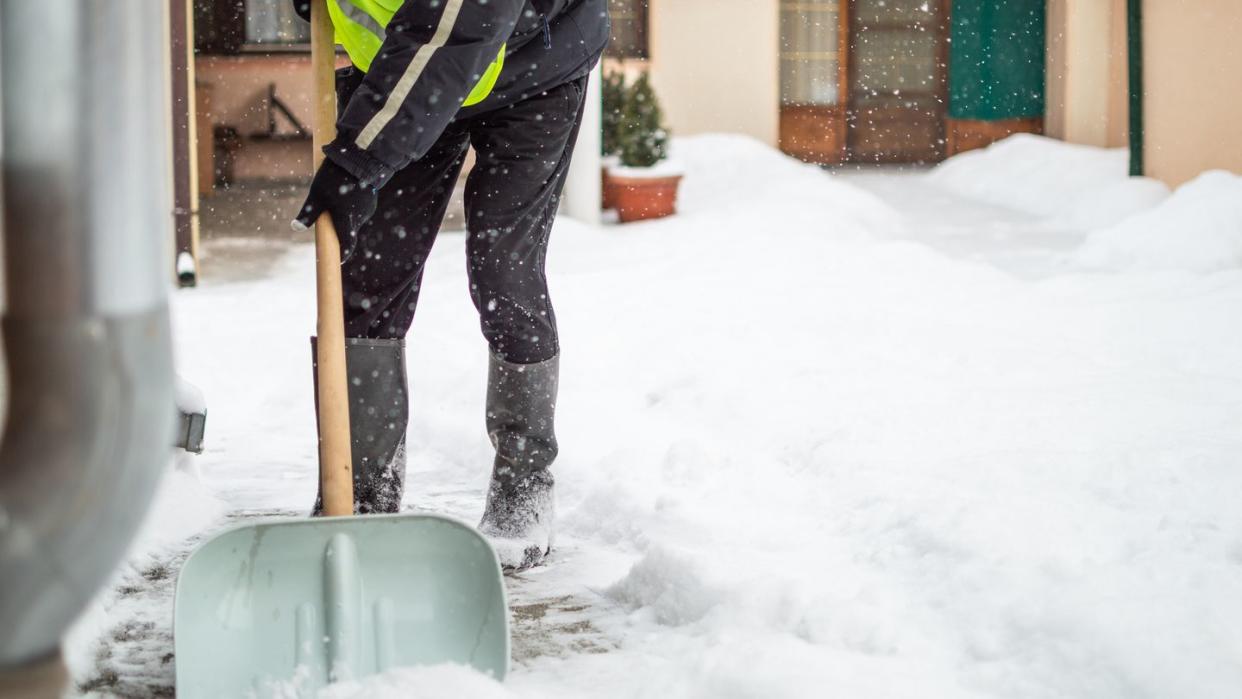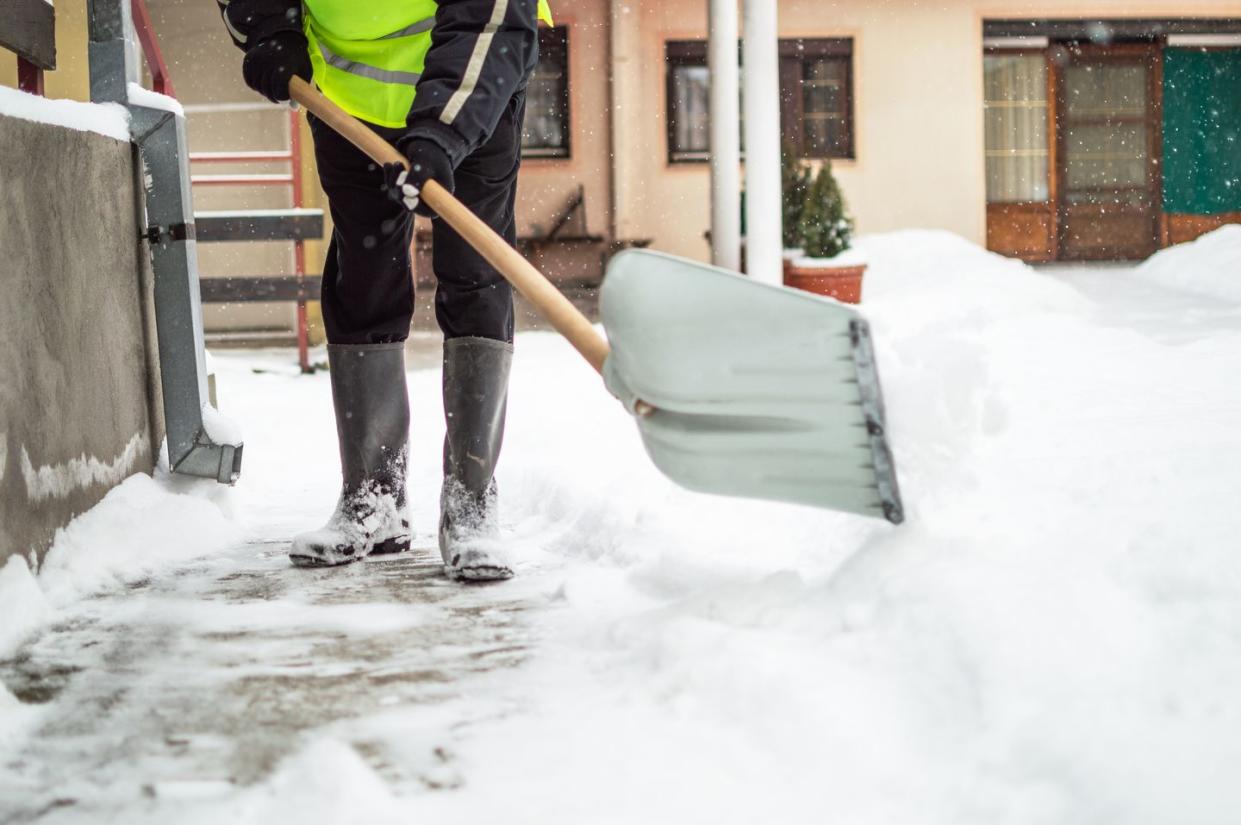The Age When You Need to Stop Shoveling Snow Is Way Earlier Than You Think

An “age is just a number” mindset is fantastic when it comes to things like writing your first novel later in life or marrying your soulmate who happens to be younger than you.
But one place it does not apply is when it comes to shoveling snow, which so many of us do every winter: The incidence of sudden heart attack spikes some 16% in men of a certain age when it snows, particularly if it’s a big storm, leading to a 34% rise in deaths, a large, two-decade Canadian study found. (The study authors didn’t see the same link in women, as they noted, apparently men tend to do the driveway-clearing, especially if there’s a snowpocalypse.)
Why is snow-clearing so dangerous for some?
Let’s start with the fact that wet snow is freakin’ heavy. In one study on men, the average shovelful of snow weighed 16 pounds. “That’s 16 pounds per shovel, 12 lifts a minute for 10 minutes,” says Barry Franklin, Ph.D., a spokesperson for the American Heart Association and director of Preventive Cardiology and Cardiac Rehabilitation, Beaumont Health in Royal Oak, MI. That adds up to almost 2000 pounds, the weight of a subcompact SUV. A different study conducted by Franklin and his team years ago found that a shoveler’s heart rate increases up to 97% of his max heart rate, more than when the same person does a treadmill test at maximum exertion.
Secondly, snowstorms happen when it’s, well, cold. When you huff and puff in that cold air, your blood vessels constrict, making it harder for blood to circulate around your body. This ups your blood pressure, making it harder still for your heart to get enough blood, he says.
But what makes shoveling snow uniquely dangerous has to do with the activity itself, which is why the American Heart Association has been working to raise awareness of the unique risks involved. Here’s why:
Shoveling is static exertion, i.e., you’re standing in one spot and using your upper body to lift heaps of heavy, wet snow. “With this kind of exercise, you see sudden, big increases in heart rate and blood pressure,” says Franklin.
Lifting with your arms asks much more of your heart than if you lifted the same weight with your legs, says Franklin.
Hoisting and pushing tends to make us hold our breath as we strain, which also leads to an increase in heart rate and blood pressure.
Standing still while you shovel or use the snowblower means that “your heart is running like hell, but you’re not moving your legs, so blood pools in the lower extremities,” explains Franklin. I.e., it’s not getting back up to your heart as readily.
And then there’s the constriction of the arteries of your heart because it’s cold; these are the size of cooked spaghetti to begin with, he says. That ups blood pressure and means less blood gets to your heart.
What does age have to do with it?
“People don’t run into trouble if they’re 20 or 30 because they haven’t developed coronary artery disease," says Franklin. “But if they’re 45 to 50 or older, with known or hidden heart disease, especially people who are habitually sedentary, this activity is very dangerous.”
Note that he said “hidden” heart disease — lots of us have heart disease we aren’t aware of; if we haven’t noticed symptoms, we’d have no reason to be diagnosed. “If you’re over 50 and grew up eating McDonald’s and Ben & Jerry’s, you probably have some heart disease — that’s just a fact,” says Franklin.

The same is true if you have diabetes or high blood pressure — both risk factors for heart disease — even if you haven’t had heart symptoms such as chest pain. “Sometimes the first and last symptom of heart disease is cardiac arrest,” he says.
Of course, there are physically fit middle-aged people who would be better able to handle this level of exertion. “There’s no way I can come up with an age and gender cutoff point because people vary tremendously,” says Franklin. “All I can say is that if you exercise regularly, have normal cholesterol and don’t smoke, it’s intuitive that you would be at lower risk, though there’s no such thing as no risk. Our ability to predict remains imperfect.”
As for women’s risk, Dr. Franklin says it would be hard to prove that clearing snow is just as dangerous for women of a certain age, because the relevant research has been done only on men, and on a population level, fewer women appear to shovel. Still, “Women, like men, are certainly susceptible to coronary disease, and there have been reported heart attacks in women, including some fatalities, following snow removal,” he says.
So is there a safer way to clear your driveway?
Yes!
Pay the neighbor kid. This is a must for people in their seventies and eighties. Even if you’ve done it before without a problem, and especially if you have ever smoked or have any other heart disease risks, it’s time to hang up the shovel, says Franklin.
Push, don’t lift. Pushing snow off your steps with your shovel, rather than hoisting it, says Franklin, puts less strain on the heart.
Mind the wind chill. If the real-feel temperature is very cold, your vaso-constriction will be worse. Always dress in layers, with hat, gloves and a scarf.
Avoid heavy meals, smoking or alcohol before and after shoveling.
Start and stop. Take a work-rest approach, he says, which will bring your heart rate and blood pressure back down. “Don’t try to do it all at one time.”
Use an electric snow blower. This is still risky if you have heart disease and other health issues, but because you are moving, it is somewhat safer, says Franklin.
Don’t ignore symptoms. “If you have pain or discomfort anywhere from the belly button up, stop,” says Franklin. And if you feel any of the signs of a heart attack, call 911 or get to an emergency department immediately.
You Might Also Like
